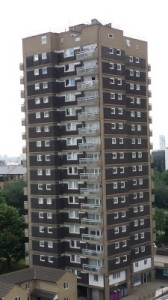While talking to a few first time buyers in the Far East, I’ve noticed that many do not pay much attention to whether the flat they have just bought off-plan has a large component of social housing attached to it.
The couple times I’ve asked Sales Agents at a luxury sales launch event in Singapore for more details about the social or affordable housing allocated within a particular development, I was told that these units were “in a separate building”, or that these were “affordable, not social units”.
There was an overall lack of details provided, and the social housing issue would be brushed off lightly as something unimportant to be concerned with, as these units were simply “like HDBs”, and as Singaporeans, weren’t we used to condo developments built within most HDB estates anyway?
It seems like the social or affordable housing issue is often brushed under the carpet at off-plan sales launches, with some Singapore-based agents having limited understanding of the schemes in the first place. I was once told that “by law all developers need to provide for social housing anyway”, which is not necessarily true, as some developers have successfully negotiated with their local council to make payment in lieu of the provision of onsite affordable housing, with Canadian High Commission building in London’s Mayfair being such a recent example. I’ve also been told that social housing residents were mainly going to be key government workers given priority such as nurses or firefighters, but this is also not necessarily true in all cases – the Council can house anyone they like in there.
If you are an overseas investor looking to buy into the London new build market, should you be concerned about the allocation of social or affordable housing within the development? If you ask me, the answer is most definitely yes, particularly if you are buying into a mid-priced large development with thousands of units in it, which will most likely have allocated on-site affordable housing.
Having personally lived in a new development complex in London with both private housing (a large proportion which was sold off plan to investors in Asia) as well as social and affordable housing sections, there are certain subtle differences between the social housing blocks vs those from private sales. Our flat within the private sale area was situated within a gated complex with a shared landscaped garden and security on night patrol, and we had 24 hour access to concierge services. While these social housing blocks nearby had a similar architectural appearance in terms of design, the blocks did not have such extra facilities, and were allocated by the housing council to those higher on the waiting list, including single mothers with multiple children, and the homeless. Exactly who is allocated a social housing flat by the council is currently not public information, however from our own observations and conversations with neighbours, a number of social housing tenants included those had moved in were families of African refugees granted amnesty in the UK from war-torn countries such as Somalia. Those not prepared for such neighbours might be in for a surprise when they finally fly to London to inspect their flat upon completion.
Should the presence of social or affordable housing impact on your decision as to whether or not to invest in a particular new development? This is very much a personal decision, dependent on your views on the welfare state and value of mixed communities in a neighbourhood (think HDB’s ethnic quotas), but many investors I know look for capital appreciation as the Number 1 reason for their purchase, and a development with a large percentage of social or affordable housing might impact on the value of their investment. As many investors buy a flat as a possible future home for their children looking to pursue further studies in London, the presence of social housing may also be a concern.
Here are the top questions I suggest investors research on regarding social/affordable housing:
What percentage of this development is allocated to social housing?
If you are looking to buy into a mid-priced, non-prime London development with a few hundred units, it is more likely that not that yes, there will be a social or affordable housing component in the development. Depending on each council, smaller sites with fewer than 50 units (this number varies based on the individual agreement with the local Borough) can avoid providing social or affordable housing units, so 100% of the flats within the development will be privately owned.
Will this be social or affordable housing?
Generally, it is preferable for an investor to choose a development with affordable housing instead of social housing. While affordable housing can be part owned in small “shares” by ‘aspirational’ people taking advantage of government schemes who may not have the funds for 100% of the flat but can afford to put down a small deposit for say 50% of the flat, social housing is allocated based on “need”, which means that the social housing flat will end up being allocated to those poorest and possibly homeless.
In any case, the trend in London housing policy is to move away from ‘welfare to reward’, by providing affordable homes to help working families locked out of home ownership rather than social housing.
Where will the social or affordable housing be located?
Most developers will have a site plan, ask for this and find out where the affordable homes will be located. If this is the next block over, will it impact your decision to purchase? Can you choose a unit further away from the affordable blocks, and if so, is this far away enough for you?
Would you spend your hard-earned money to buy a flat with a social housing component? In my view, ultimately, the area and road is my top concern, and would precede the presence of social housing. Leave your comments and let me know!

